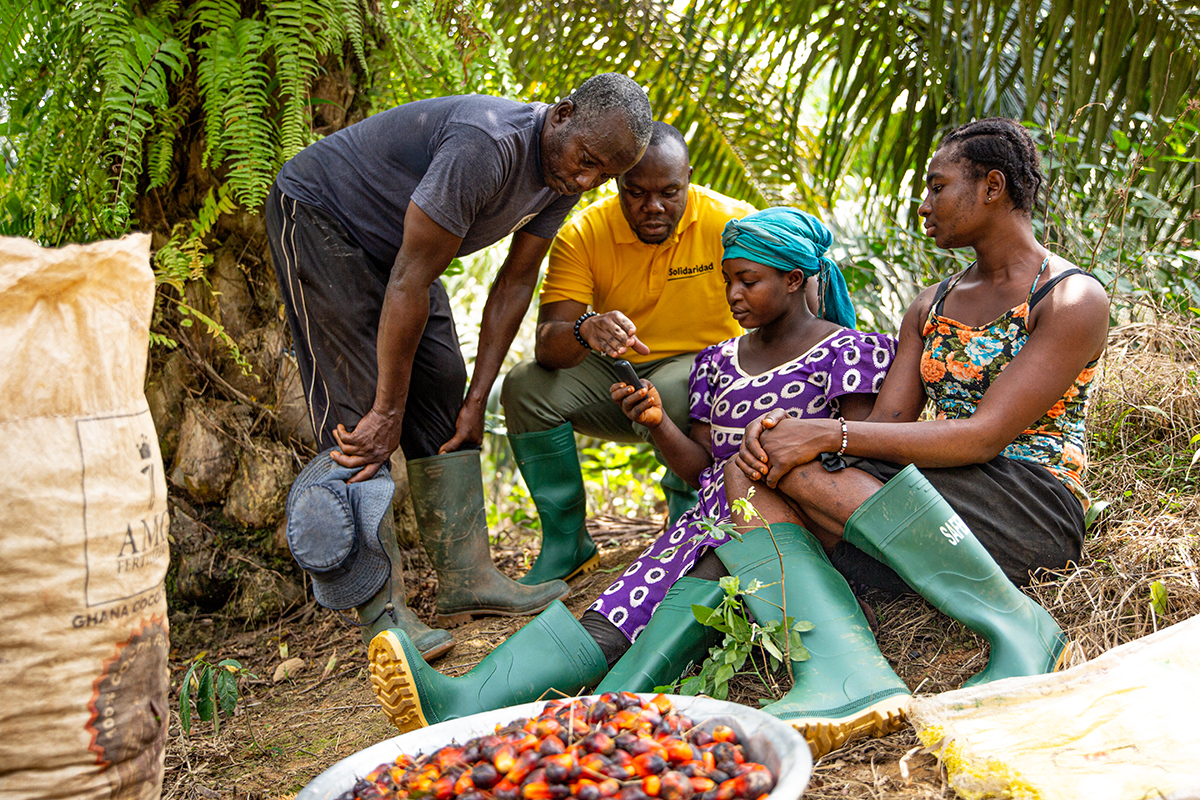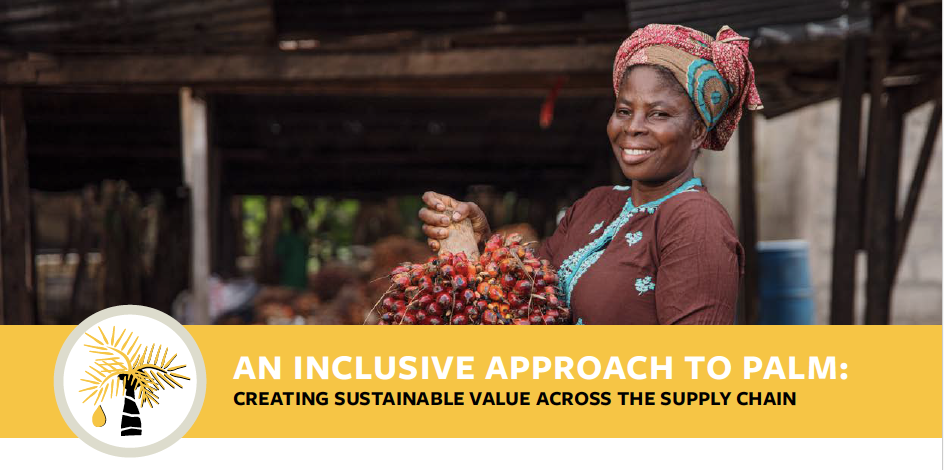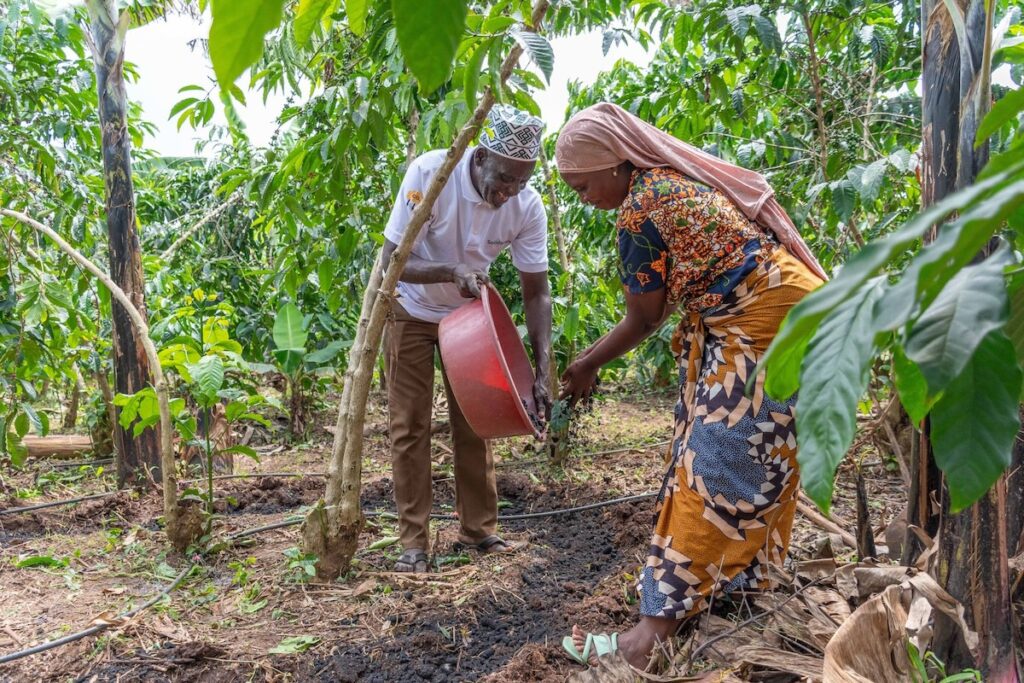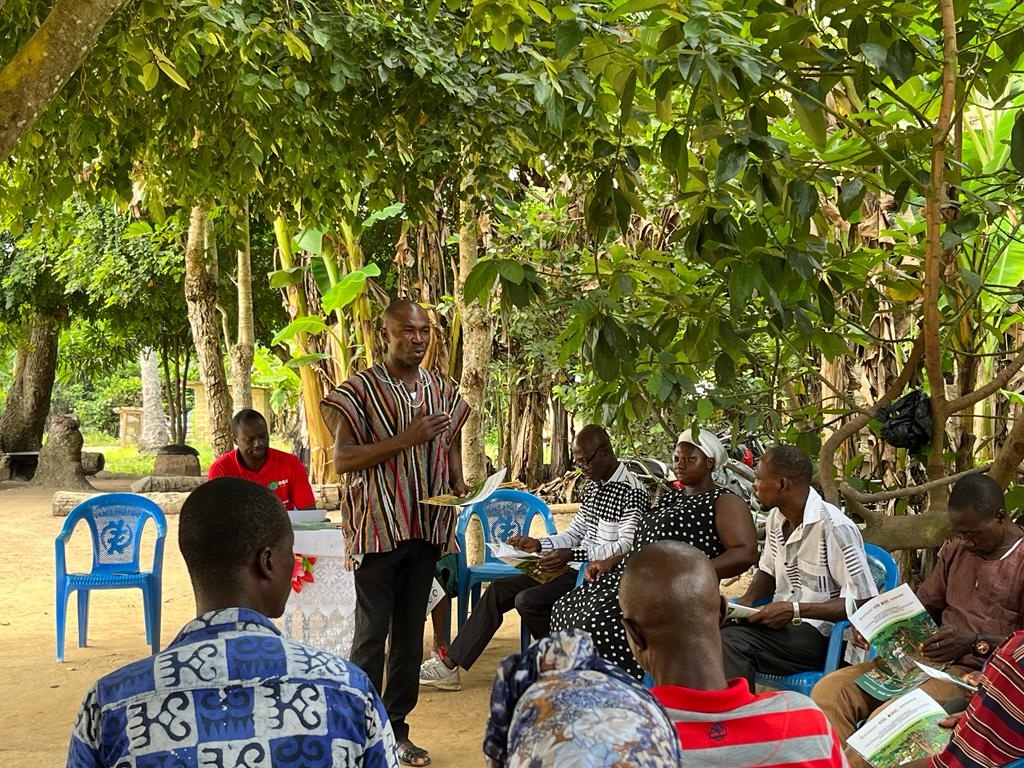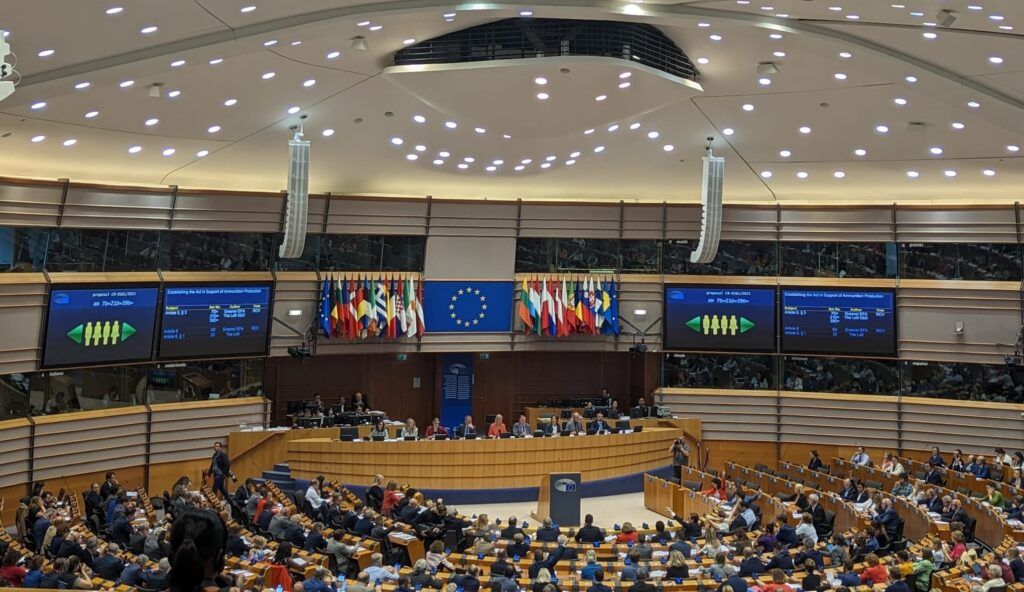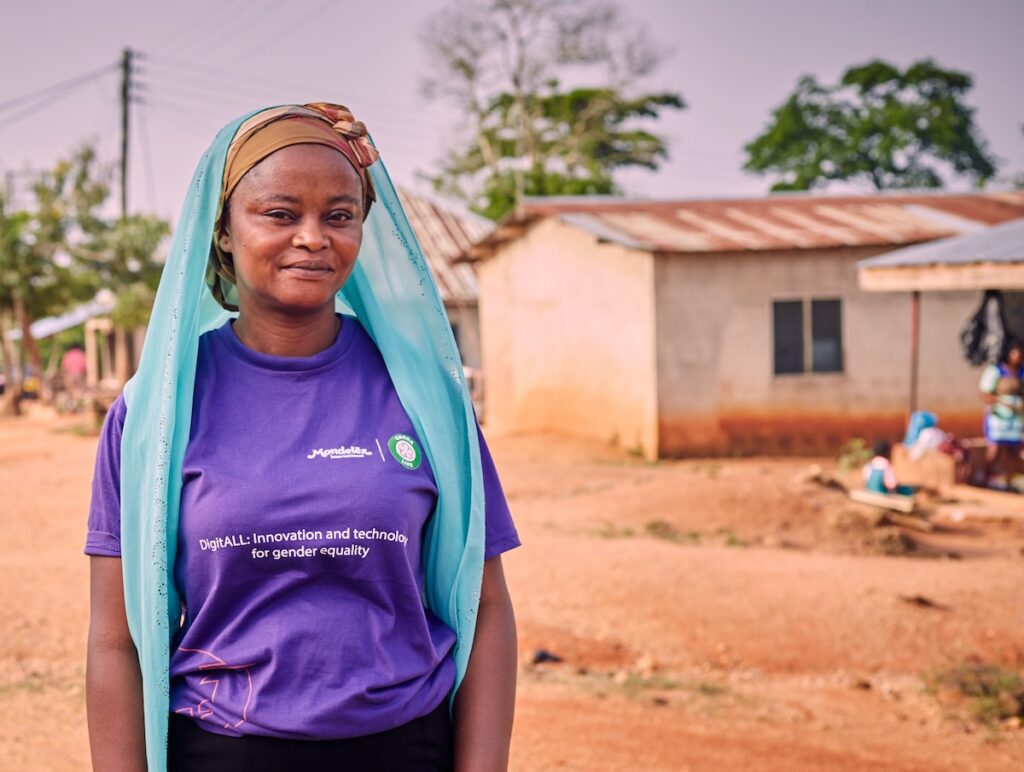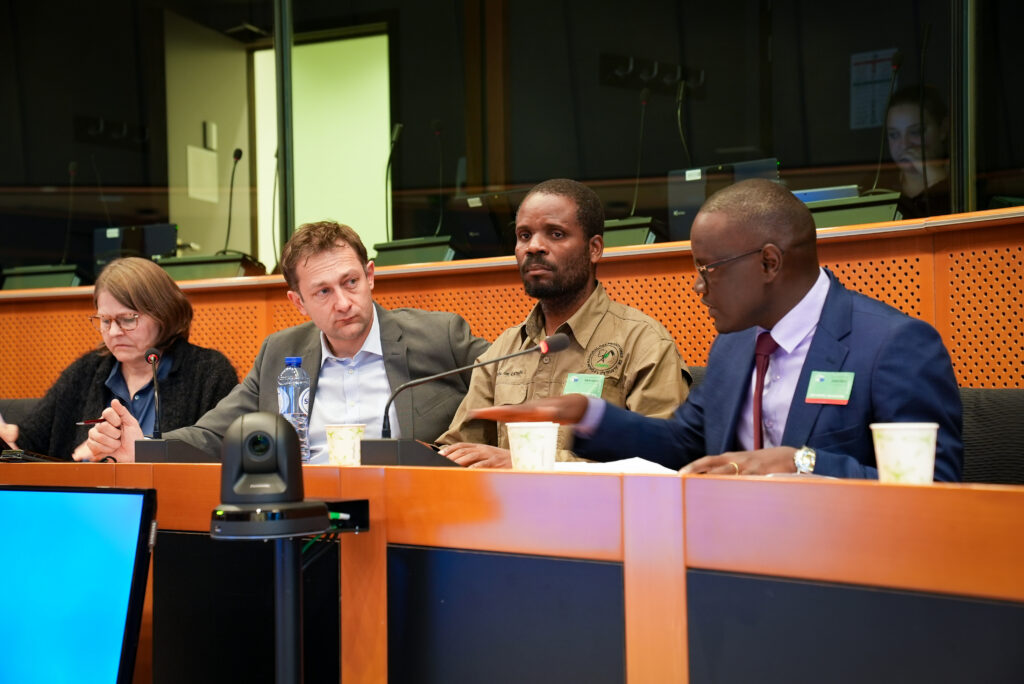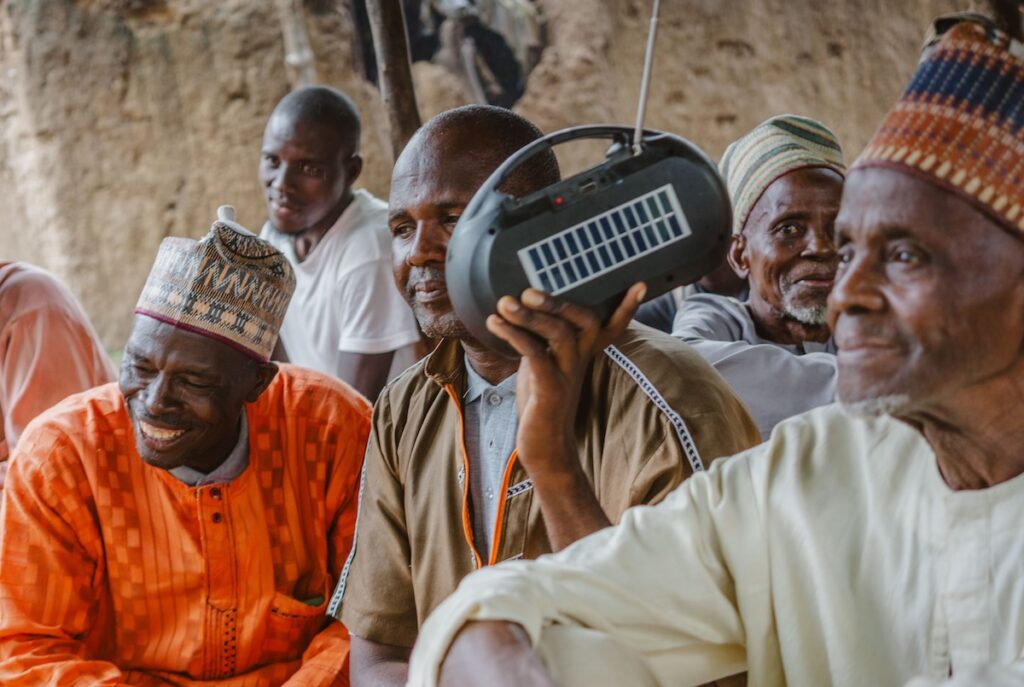Farmers in Western Ghana test the Harvest Alert tool
The weight of fresh fruit bunches is the currency of the oil palm trade. It determines the income of farmers and aggregators, the sustainers of the supply chain.
Harvested fresh fruit bunches tend to steadily lose weight due to evaporation when not evacuated on time. The direct consequence is a loss of income by the farmer and aggregator.
Over the years, a lack of cooperation between farmers, aggregators and mills on harvesting and evacuation timelines has been the nucleus of this challenge. Farmers reference the inability of aggregators to pick up their harvest on time as the key contributory factor, while aggregators maintain that the scheduling variances between the farmers who need their fruits collected instantly, and the mills they deliver to, often place them at a disadvantage.
Naomi Amoah, an oil palm farmer in the Western region of Ghana, describes this challenge as an income sink, which adversely affects her financial planning.
“It takes a while for aggregators to evacuate my harvested fruit. By the time they get to my farm, the fruit would have lost some weight. After harvest, my initial weight check could be 20 or 18 tonnes. Sometimes it takes the aggregators between 2 weeks to a month to get to me, by which time the weight would have reduced to 16 tonnes or even 15 tonnes. This drastically affects my income projections and planning. It is a major challenge for me,” she said.
Leveraging innovation to bridge the gap
Harvest Alert, a web and mobile application developed by Solidaridad, is meant to effectively remove this recurring issue. It provides a common platform for farmers, aggregators and mills to schedule harvest, evacuation and delivery timelines. Harvest Alert is a farmer-friendly innovation with features tailored to the technological need of each stakeholder.
To develop the application, Solidaridad held deep consultations with the various actors within the supply chain, factoring in their key challenges with the current system and the accessibility barriers that may hinder the adoption of the innovation.
Harvest Alert is embedded with a geolocation and mapping feature for enhanced visibility and serves as a directional guide for aggregators to locate farmers on time. It also allows for real-time data collection and analysis, where users can see any updates or inputs made by another user instantaneously, ensuring that information flow remains fluid.
John Spoi Ashun, Solidaridad full-stack engineer
“Data protection was also a key consideration in developing the platform. The platform has layers of security controls to ensure that all data shared is secured and privacy remains optimum,” John added.
How Harvest Alert works
Harvest Alert consists of an Unstructured Supplementary Service Data and a web application that provides different access routes for different users.
The Unstructured Supplementary Service Data enables farmers to use the platform without an internet connection, particularly those in rural areas where internet access is limited. Farmers can send alerts to aggregators or mills, informing them of the readiness of their crops for harvest. Farmers can also view and respond to harvest requests from aggregators and mills, as well as view appointments for the pickup of fruits from their farms.
Harvest Alert on the web has a user-friendly interface, tailored to the needs of both aggregators and mill operators. It provides a dashboard where users can track current and past harvest activities, generate reports, and access statistics on the volume and value of harvests.The tool also provides information on farmer availability and location, while allowing aggregators and mills to schedule collection timelines with farmers.
Harvest Alert is revolutionary. It plays a key role in ensuring farmers get fair value for their produce at the time of harvesting and evacuation, as well as integrating them into sustainable global supply chains through traceability. With more than 20,000 smallholder farmers harvesting oil palm fruit every month, Harvest Alert has a big market potential as it addresses key constraints to farmers, aggregators and mills. Harvest Alert works as a market facilitator and can be scaled to other commodities.
Rosemary Addico, Solidaridad programme manager, West Africa
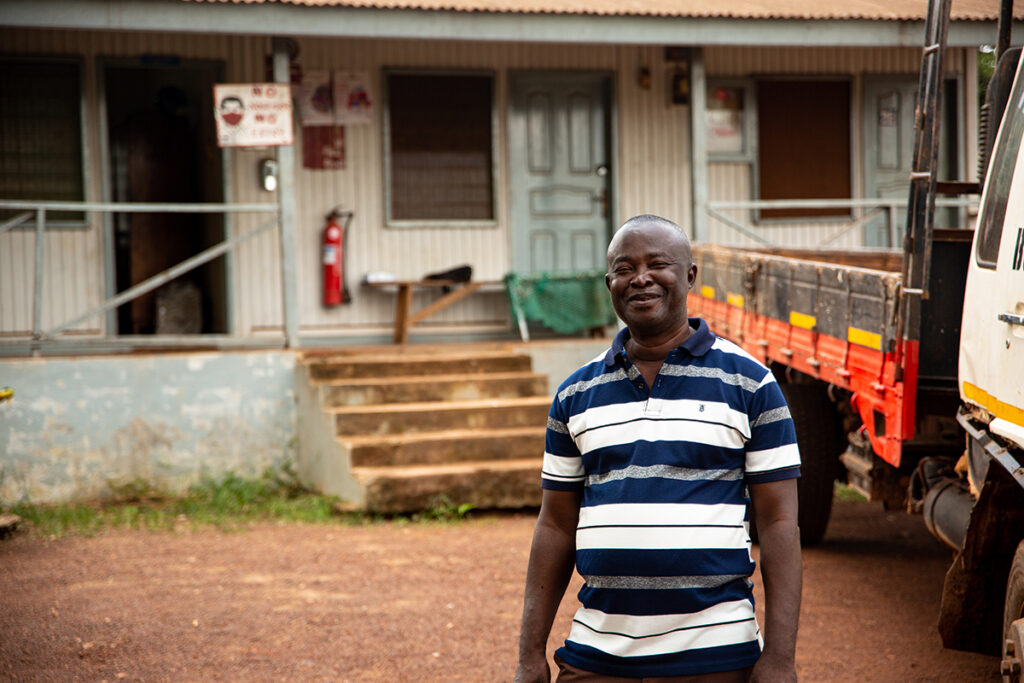
Mr Harold Agyako, an aggregator in the Western region, said that he was excited about this innovation from Solidaridad, because the platform allows them to plan their harvest and evacuation in a more coordinated way.
Field Testing and Training for Harvest Alert
Solidaridad trained twenty-eight aggregators and mill operators from 10 companies, so they could test the application and give feedback.
“I love the idea of a platform that can harmonize our harvesting and evacuation efforts. I, however, recommend a voice feature that will improve the farmer’s experience. Most farmers will be limited by text and may consequently not use the platform. We can include a voice function that allows farmers to submit their evacuation requests via audio. I believe this will increase acceptability among smallholder farmers,” said Isaac Ampofo, an aggregator and General Manager of Nat-K Royal Limited.
As the managing director of Agro Quorum, an aggregation company, Godfred Amoako said he is looking forward to uploading his data on the platform because it will afford him the opportunity to track his farmers’ harvest in real time and plan evacuations in a timely manner that secures both the income of farmers and his company.
The way forward
Solidaridad launched version 1.0 of Harvest Alert, and it can be accessed at www.harvest.com. Solidaridad will continue to engage stakeholders to test the platform, to address any software malfunctions and to integrate new features that will improve the user experience. The team is scheduled to conduct a series of field testing and training across the various oil palm growing regions in Ghana through December 2023.
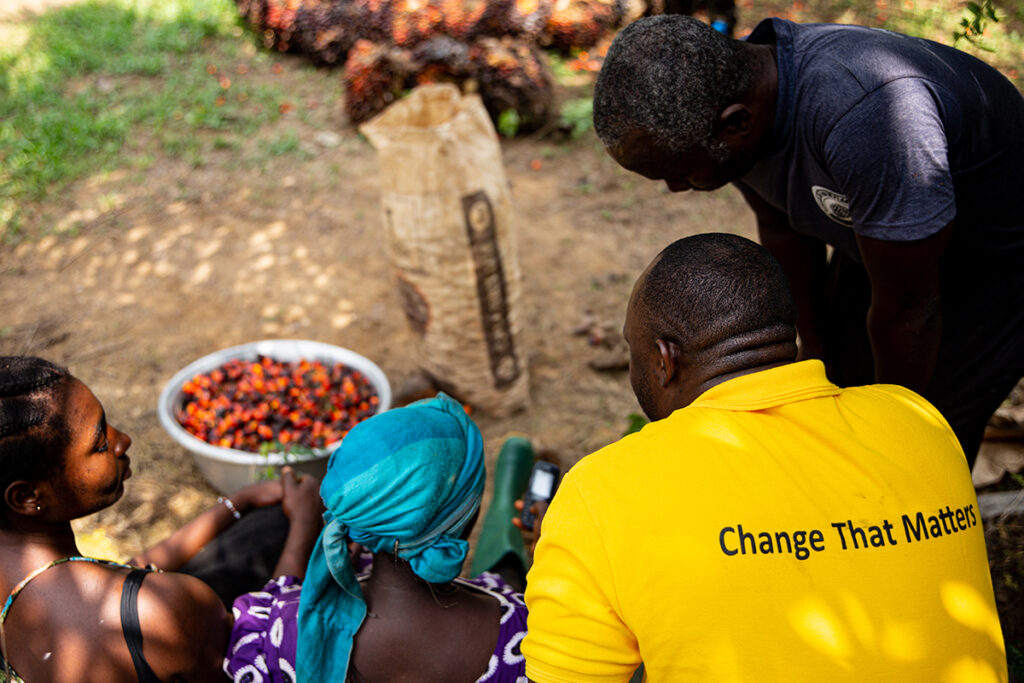
Harvest Alert and the RECLAIM Sustainability! programme
This tool has been developed under Solidaridad’s RECLAIM Sustainability! programme (2021-2025) which is implemented in the cocoa, oil palm, and gold commodity landscapes. The programme seeks to contribute to inclusive sustainable value chains and trade in an innovative way, in which interests, voices and rights of farmers, workers, and citizens are represented and heard in decision-making for the sustainable use of natural resources, decent work, fair value distribution, and sustainable consumption.
In West Africa, the RECLAIM Sustainability! programme is implemented in Côte d’Ivoire, Ghana and Sierra Leone by Solidaridad and TrustAfrica with funding from the Ministry of Foreign Affairs of the Netherlands.

